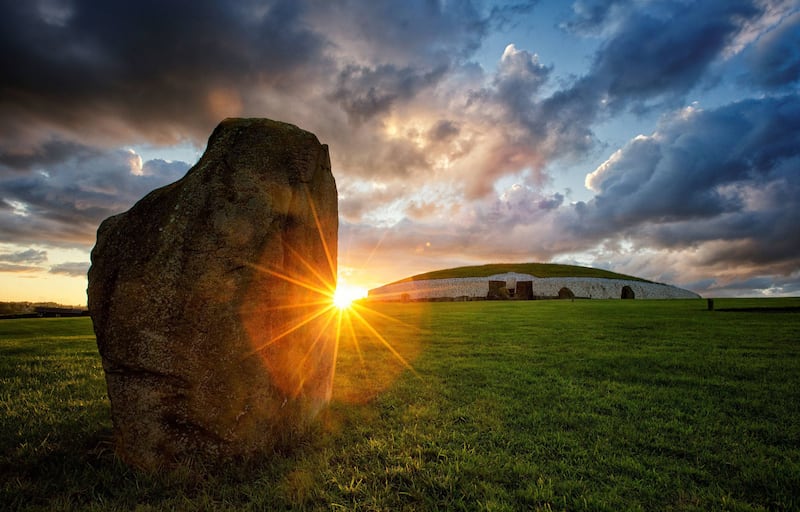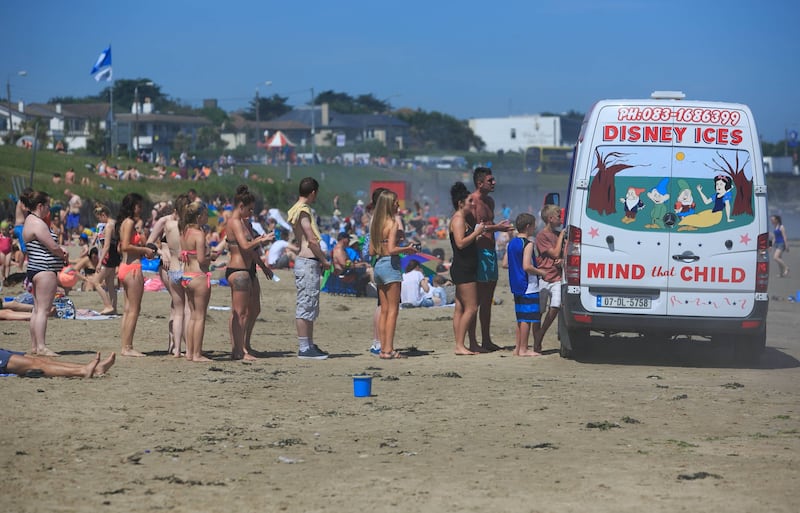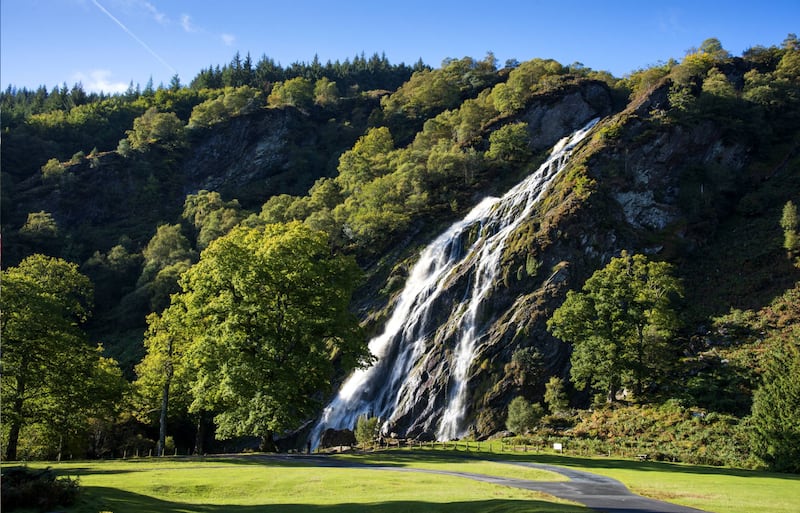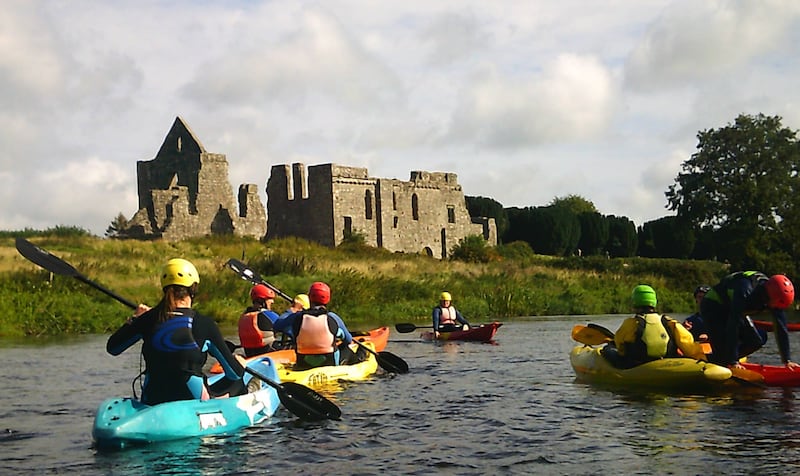One might disagree somewhat with the official tourist board definition of Ireland’s Ancient East (it includes, somewhat puzzlingly, Lough Gur in Limerick, Athlone on the Shannon, and even the Rock of Cashel), but it can’t be denied that exploring the east coast brings a multitude of surprises and pleasures, whether it’s discovering historical locations, enjoying sandy beaches, checking off monuments and castles, or marvelling at the beauty of hills and woodlands.
Where to start, and where to finish? Well, since you can read all about staycationing in Northern Ireland in another article in this series, we could mark the finishing point for the east coast at the Cooley peninsula and Carlingford Lough. Then down through Dundalk and Drogheda to Dublin, on to Wicklow and Wexford, finishing finally in Waterford. Yes, it could be argued that Waterford is rather more in the south, but it links in nicely with the rest of the route and is a good place to start or finish.
The Cooley Peninsula in Co Louth includes Carlingford town, and the port of Greenore. Slieve Foy is its highest peak, but look to the north to see the beautiful Mountains of Mourne sweeping down to the sea.

The area’s real fame comes from that ancient epic, the Táin Bó Cúailnge, which tells of Queen Maeve’s dramatic battle-journey across the country to seize the famed brown bull of this region. A little way south, don’t miss the spectacular Proleek Dolmen, with its capstone weighing a staggering 35 tons.
READ MORE
You would be wise to book for Newgrange, a Unesco World Heritage Site, well in advance
You could take a side trip a short way into Monaghan to visit the Patrick Kavanagh Centre at Inniskeen. You can take a tour which includes many local sites immortalised by Inniskeen’s most famous son. Then on to Dundalk, which in older times was known as The Gap of the North because of its strategic location between Leinster and Ulster. The legends of the warrior hero Cúchulainn are very firmly set here; see if you can spot the motto on the town’s coat of arms: Mé do rug Cú Chulainn cróga – “I gave birth to brave Cú Chulainn”. Clochfarmore, the great standing stone to which the hero is reputed to have tied himself before death, is west of Dundalk, near Knockbridge.
At Drogheda the Boyne Valley is reached, and here a full day would not be enough to explore the archaeological riches of the region. You would be wise to book for Newgrange, a Unesco World Heritage Site, well in advance, but even to wander around and see some of these amazing ancient structures from the outside is to wonder at the achievements of our ancestors. Check it out on https://www.discoverireland.ie/boyne-valley.

Drogheda itself was a trading post and stronghold for both Vikings and Anglo-Normans, and was in fact two separate towns, one each side of the river, up to the 15th century when they were amalgamated. It is has a cosy market town feel with lanes to explore and cafes to visit, while children will beg for a visit to the water park and those of a quieter disposition will head for Mellifont Abbey to enjoy the peace there.
And then you are coming down through the coastal towns of Balbriggan, Skerries, Rush, Malahide and Portmarnock, to see the splendid Hill of Howth and, just offshore, Ireland’s Eye, the first and last glimpse of Ireland seen from ships coming in or going out of Dublin.

Dublin. What can we say about our capital city that you don’t know already? The capital features legendary cafes, restaurants and pubs, where great figures of literature, poetry and music drew much of their inspiration over the centuries. There is so much to see and do that an advance list is a good idea.
Retail therapy or natural history? A canal walk or coffee in a famous hostelry? Retracing the steps of James Joyce’s hero Leopold Bloom from Sandycove to the northside, or remembering the days of Dean Swift at St Patrick’s Cathedral? Coveting the flowers and plants at the Botanic Gardens? Taking a selfie with Molly Malone or saluting Oscar Wilde on Stephen’s Green? Theatres or Temple Bar? How about a ghost tour? Dublin Castle? The GPO with its memories of 1916? The Guinness Storehouse? Make time to see the incredible Eve of St Agnes stained glass window by Harry Clarke at the Hugh Lane Gallery, and soak in the serene dignity of the National Library. Have afternoon tea at the Shelbourne, and walk over the Ha’penny Bridge. Dublin Zoo has been a traditional children’s treat for generations, and set as it is in the spacious Phoenix Park, you will find time for wandering under the trees too, and seeing which of your family will be first to spot the resident deer grazing peacefully amid the long grass.
Wicklow
Drive south from Dublin and you’re in Wicklow, with some of the most spectacular scenery you could imagine from mountains and forests, to charming villages and tiny winding roads. If you’re keen on walking, then this is the place to try out your new boots: there is a 129km walking trail right through the county’s National Park.

It’s not surprising that Wicklow was chosen for filming much of The Vikings – here the directors could be sure of finding just the wild background they needed to recreate that world. And they weren’t the first to come. Many a movie or TV series has been filmed in this county – Excalibur, Michael Collins, The Tudors, to mention just a few – because of its incredible beauty and its dizzying variety of scenery, forests, moors and mountains.
The much-loved Ballykissangel was filmed in Enniskerry and Avoca, both classic examples of the traditional Irish village. They are well geared up for fans today with plenty of shopping opportunities and restful cafes where you can sit and just imagine the show’s characters wandering past.
The Powerscourt estate near Enniskerry was recently voted one of the Top Ten Houses in the World by Lonely Planet, while National Geographic listed it at No 3 in the World’s Top Ten Gardens. The Powerscourt Waterfall on the River Dargle, with a 397 ft drop, is best seen after a good bout of rain when it is at its most spectacular.
Coastal Arklow, founded by the Vikings, saw some of the bloodiest fighting in the 1798 rebellion. It has long maintained a gold-mining tradition
Glendalough is a haven of peace and tranquillity with its round tower set by a silent lake. Famed as the home of St Kevin, it was in all probability an ancient site of worship long before the coming of Christianity. Lakes enclosed by mountains were favourite places for the ancients to study, work magic and receive pilgrims seeking favours.
Brittas Bay is a fine Blue Flag beach with 5km of fine powdery sand backed by splendid sand dunes that are home to many rare species of wildlife and plants. For this reason it has been proposed as a Special Area of Conservation. The beach will keep the kids happy for hours, and there is an excellent golf course adjoining too, to keep Dad happy. Plus, of course, there are plenty of lodging and dining facilities. Young children will also love following the fairy trails at Russborough near Blessington, searching for the tiny elfin houses, while the entire family will thoroughly enjoy losing themselves in the genuine maze at Greenan near Rathdrum.
Coastal Arklow, founded by the Vikings, saw some of the bloodiest fighting in the 1798 rebellion. It has long maintained a gold-mining tradition and there are often gold panning sessions on offer (although there must be little left in the streams which rush out from the nearby mountains by this time). There is also an excellent maritime museum chronicling the town’s long links with the ocean.
Wexford
Wexford is a fascinating county which somehow manages to be quite different to the rest of Ireland. It has its own local dialects of the Forth and Bargy men, and even the remnants of very ancient mumming plays. The town is a wonderful maze of narrow winding streets which are crowded during the Opera Festival each October. Curracloe, a few miles north, is another Blue Flag beach, and some of the views might seem familiar – it was used to film the D-Day landings in Saving Private Ryan. Johnstown Castle has an agricultural museum, a walled garden and even peacocks.

Birdwatchers are in seventh heaven out on The Wexford Slobs and Wildfowl Reserve, which are a haven for wintering geese and other migrant birds
The John F Kennedy Memorial Park spreads over 600-plus acres near New Ross, where the old Kennedy family home stood. The arboretum here has more than 500 different rhododendrons and azaleas, plus an internationally important collection of rare trees and shrubs. It’s fun for the children too, with woodland walks, tree houses, and transport by miniature train or pony trap during the summer season. A few miles east of New Ross, you will discover Old Ross, which dozes peacefully in the sunshine, dreaming doubtless of the past before the upstart new town took its place.
Birdwatchers are in seventh heaven out on The Wexford Slobs and Wildfowl Reserve, which are a haven for wintering geese and other migrant birds, as well as the Irish hare. Originally mudflats, they were reclaimed in the mid 19th century by the building of a sea wall. Bring your binoculars and spend the day. Or visit the Saltee Islands just off Kilmore Quay, privately owned, but day visitors are allowed on Great Saltee by licensed ferries. These are another birdwatchers’ paradise, with gigantic flocks of gannets and other cliff-nesting species covering the Little Saltee. The Irish National Heritage Park at Ferrycarrig is an open-air museum telling the story of human settlement here from the Stone Age to the Norman invasion in 1169. Reconstructed artefacts include a camp, farmstead, dolmen, stone circle, medieval ringfort, monastic site, crannog or island dwelling, and Viking harbour.
Waterford claims to be the country’s oldest city, founded by the Norsemen around 914 AD, and through the millennia, ships from both the icy north and the sunny south have tied up at its quays. Eleventh century Reginald’s Tower still stands on the waterfront, with a reproduction Viking longship permanently moored alongside. Much of the city’s growth and prosperity has been due to the “Three Sisters”, the Barrow, Nore and Suir rivers, which come together here and flow out into the sea by Hook Head, where the oldest operating lighthouse in the world has flashed its beacon of welcome and warning since the 5th century. Head out to Newtown Cove and see the tall Metal Man on his pillar, pointing to the safe route into harbour. The splendid Blue Flag beach at Tramore is everything that small children, yearning to use their buckets and spades, could wish for.
Follow up the Barrow, Nore or Suir, as generations of traders have done, and discover the small towns and villages which populate their banks. Portlaw, on the Suir, once held a huge cotton spinning mill which employed thousands. The ruins still stand. Lismore Castle, home of the Dukes of Devonshire, is a splendid sight to behold, towering over the mighty river Blackwater, which forms the boundary between Waterford and Cork.
Stroll awhile on the beach or round the fishing harbour at Ardmore before deciding which part of Ireland’s Ancient East you most enjoyed
The one thing the whole family will enjoy is the Greenway, which follows the old railway line from Dungarvan to Waterford. Whether you cycle, stroll, or jog, it’s a wonderfully peaceful place, with cycle hire, leaflets and marked points where conveniences and food stops can be found. When you reach Kilmacthomas, try the strange experience of enjoying coffee and cakes in a building that was once the 19th century workhouse. There is an old railway tunnel too, easy to stroll through, seeing the light at the other end slowly grow as that behind you fades. How often do you get the chance to walk through a railway tunnel?
And so on to Dungarvan, a bustling market town with excellent cafes in which to rest and enjoy a break before exploring the rest of Waterford. Drive in the Comeragh mountains, or discover Ireland’s only monument to a greyhound, Master McGrath, some 5km out of town on the N72. Stroll awhile on the beach or round the fishing harbour at Ardmore before deciding which part of Ireland’s Ancient East you most enjoyed. Most probably you won’t have managed it all in one trip – but there is always the next break!




















